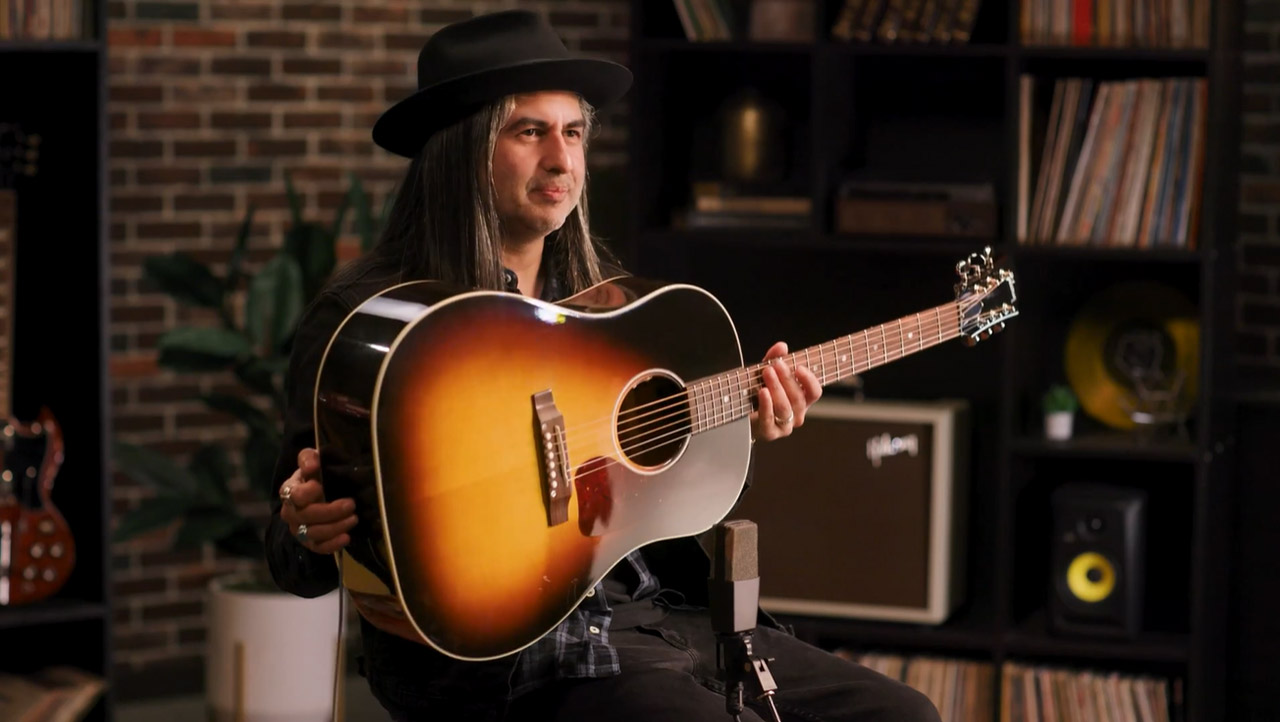Three things you must consider when buying your first Gibson acoustic guitar
In this Gibson acoustic guitar comparison, host Dinesh Lekhraj from the Gibson Gear Guide demonstrates four of Gibson’s most popular acoustic guitars, exploring how differences in body shape influence the guitar’s sound. The models featured are the Gibson L-00 Standard, Gibson J-45™, Gibson Hummingbird™, and the Gibson SJ-200. You may also find the new Rosewood Standards compelling.
This beginner’s guide focuses on acoustic guitars that are ideal for all skill levels, particularly those committed to playing long-term and looking for an instrument that won’t require future upgrades. It comes down to three things: design, playability, and tone. Dinesh explains the unique sound characteristics of each body type, helping you decide whether a Small body, Round Shoulder, Square Shoulder, Jumbo, or Super Jumbo Gibson acoustic guitar best suits your playing style.
The genesis of the Gibson acoustic guitar
The history of Gibson acoustic guitars traces back to the late 19th century when Orville Gibson began crafting instruments in his Kalamazoo, Michigan, workshop. His innovative designs, which featured carved tops and backs, laid the groundwork for future guitar construction.
By 1902, Orville had established the Gibson Mandolin-Guitar Mfg. Co., Ltd. This company not only continued his legacy in mandolin making but also began to revolutionize the design and production of acoustic guitars. In 1923, Gibson’s acoustic guitars introduced the archtop design with f-holes, similar to a violin, a feature that became a hallmark in the jazz music scene.
Throughout the 20th century, Gibson expanded and refined its acoustic guitar line, adapting to the changing musical landscape. In the 1930s, during the Great Depression, Gibson introduced now-iconic models like the J-35 and, in 1942, the J-45, which became known as “the workhorse” of acoustic guitars due to its robust build and rich tone.
In 1937, Gibson produced the SJ-200, famously known as the “King of the Flat-tops,” which offered a larger body and louder, more resonant sound that appealed to a broad spectrum of musicians from country artists to rock stars.
Gibson’s influence on the music industry grew as they consistently innovated and improved their acoustic guitar models. The 1960s introduced the Hummingbird, an acoustic guitar known for its decorative floral pickguard and balanced sound, ideal for the singer-songwriters of the folk music boom and beloved by rock icons such as Keith Richards.
Over the decades, many influential musicians have preferred Gibson guitars. Today, Gibson acoustic guitars remain synonymous with quality and heritage. The luthiers in the Montana craftory are committed to combining traditional techniques with modern technology to craft instruments that uphold the legacy of Orville Gibson’s original vision.
Grab some new acoustic strings and learn how to change them with Jim DeCola’s expert guidance. For more detailed information on guitar setup and maintenance or more complicated DIY repairs, check out Gibson’s free Virtual Guitar Tech service.

